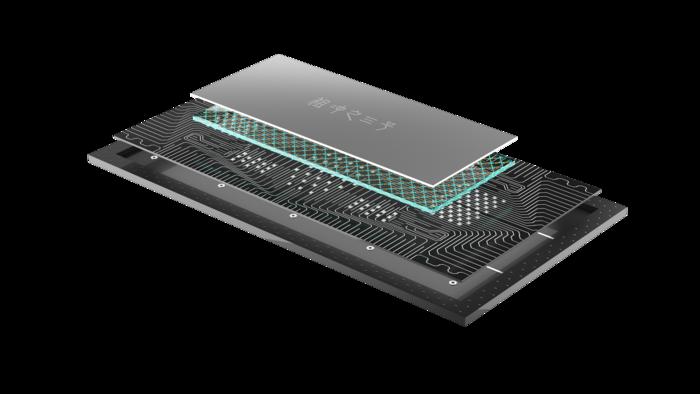
The landscape of quantum computing has seen a revolutionary advancement with the introduction of the Zuchongzhi-3 processor. This groundbreaking superconducting quantum computing prototype, developed by a team from the University of Science and Technology of China (USTC), boasts an impressive architecture comprising 105 qubits and 182 couplers. The implications of this innovation stretch far beyond mere numbers; the potential for reshaping computational capabilities on a vast scale is at stake. The Zuchongzhi-3’s specifications illustrate a significant leap over its predecessor, Zuchongzhi-2, and mark a pivotal moment in the quest for quantum supremacy—a status previously claimed by classical computing systems.
In the realm of quantum random circuit sampling, Zuchongzhi-3 has been noted for achieving speeds that are 10^15 times quicker than the existing most powerful supercomputers. This level of performance positions it as not only a formidable competitor but also raises questions about the future role of traditional computing architectures. The significant performance metrics of Zuchongzhi-3, such as its enhanced gate fidelity and coherence time, suggest that this technology could eventually surpass classical computing methodologies, effectively shifting the paradigm of computational tasks.
One of the remarkable aspects of Zuchongzhi-3 is its coherence time of 72 microseconds. This is a crucial factor in quantum computing that allows for more complex calculations and operations. The design choices made by the USTC research team, particularly in how the qubits are interconnected, exemplify a commitment to overcoming one of the critical challenges in the field: maintaining qubit integrity over longer durations. By integrating advanced structural designs in the 2D grid format, the researchers have augmented the performance spectrum significantly.
The implications of these advancements extend to the realm of practical applications as well. The Zuchongzhi-3 processor opens up opportunities in quantum error correction, quantum simulation, and even quantum chemistry. Current discussions among researchers focus on how this device can be employed to revolutionize industries that rely heavily on computations, from finance to materials science. The emphasis on scaling up the qubit numbers and enhancing their functionality suggests that the future may hold even larger and more powerful quantum computers, also with error correction capabilities.
A striking fact about Zuchongzhi-3 is its operational speed compared to classical computing systems, thereby redefining what is feasible in the digital realm. Previous quantum supremacy claims, including Google’s assertion regarding its 53-qubit Sycamore processor, have been scrutinized in light of USTC’s findings. The advancements showcased by Zuchongzhi-3 illustrate a paradigm shift not just in numbers but in the underlying principles of computation itself. With its ability to perform tasks in mere seconds that once would have taken classical systems millennia, the quantum landscape is evolving at an unprecedented pace.
Moreover, as demonstrated in its testing, Zuchongzhi-3 achieved remarkable benchmarks in a series of complex operations, substantially outperforming classical supercomputers by up to 15 orders of magnitude. This astonishing capability encourages exploration into various applications within quantum entanglement and simulation, which might yield new scientific horizons in understanding the universe. Researchers are now poised to exploit these advances for actionable insights across diverse domains of knowledge.
This innovative research by USTC’s team has not gone unnoticed in the scientific community. The work was honored with a cover article in the esteemed journal Physical Review Letters, highlighting not only the novel developments but also the broader implications for the ongoing research in quantum computing frameworks. The critical reception from the academic community underscores the importance of this advancement in establishing essential benchmarks in quantum technology.
Further, the methodology employed in developing Zuchongzhi-3 has sparked a renewed interest in exploring alternative qubit systems, such as photonic and superconducting architectures. It emerges as a catalyst for the next generation of powerful quantum devices that might soon follow. Researchers contemplate how these results will shape future experiments aimed at demonstrating even more significant computational advantages.
The next steps for the USTC research group involve delving into enhancing quantum error correction techniques and integrating surface codes designed to improve the robustness of qubit operations. The significance of achieving higher distance codes in quantum error correction cannot be understated, as it lays the groundwork for building error-resistant qubit systems suitable for practical applications. With plans to expand this research, the team anticipates a future with a vast array of interconnected qubits potentially accessible for numerous complicated computations.
In summary, Zuchongzhi-3 embodies a transitional moment for quantum computing, heralding a new age of computational capability. As researchers venture deeper into the realm of quantum technologies, the quantum landscape appears inexorably tied to advancements that could lead to unforeseen breakthroughs and discoveries. The ramifications of this new quantum processor will echo throughout not just scientific fields but also in various industry sectors, where rapid calculations could lead to significant innovations in technology and beyond.
The journey of quantum computing has only just begun, and with milestones like Zuchongzhi-3 being achieved, the future is filled with the promise of extraordinary developments that could radically transform how we perceive computation itself. Collaborations between institutions continue to strengthen the research ecosystem, paving the way for a renaissance of innovation within quantum paradigms.
The prospects are vast and tantalizing as USTC continues to push the boundaries of what’s achievable in quantum technology, illustrating how collaborative efforts and scientific fervor can lead to technological marvels previously confined to the realm of imagination.
Subject of Research: Quantum Computing
Article Title: Establishing a New Benchmark in Quantum Computational Advantage with 105-qubit Zuchongzhi 3.0 Processor
News Publication Date: 3-Mar-2025
Web References: Physical Review Letters
References: doi:10.1103/PhysRevLett.134.090601
Image Credits: Dongxin Gao et al.
Keywords
Quantum Computing, Qubits, Superconducting Systems, Quantum Supremacy
Tags: 105-qubit superconducting quantum processoradvanced quantum computing architecturecoherence time in quantum systemsenhanced gate fidelity in quantum processorsfuture of quantum computing technologyimplications of superconducting qubitsnext-generation quantum processorsperformance metrics of Zuchongzhi-3quantum circuit sampling accelerationquantum supremacy and classical computingUniversity of Science and Technology of ChinaZuchongzhi-3 quantum computing breakthrough





